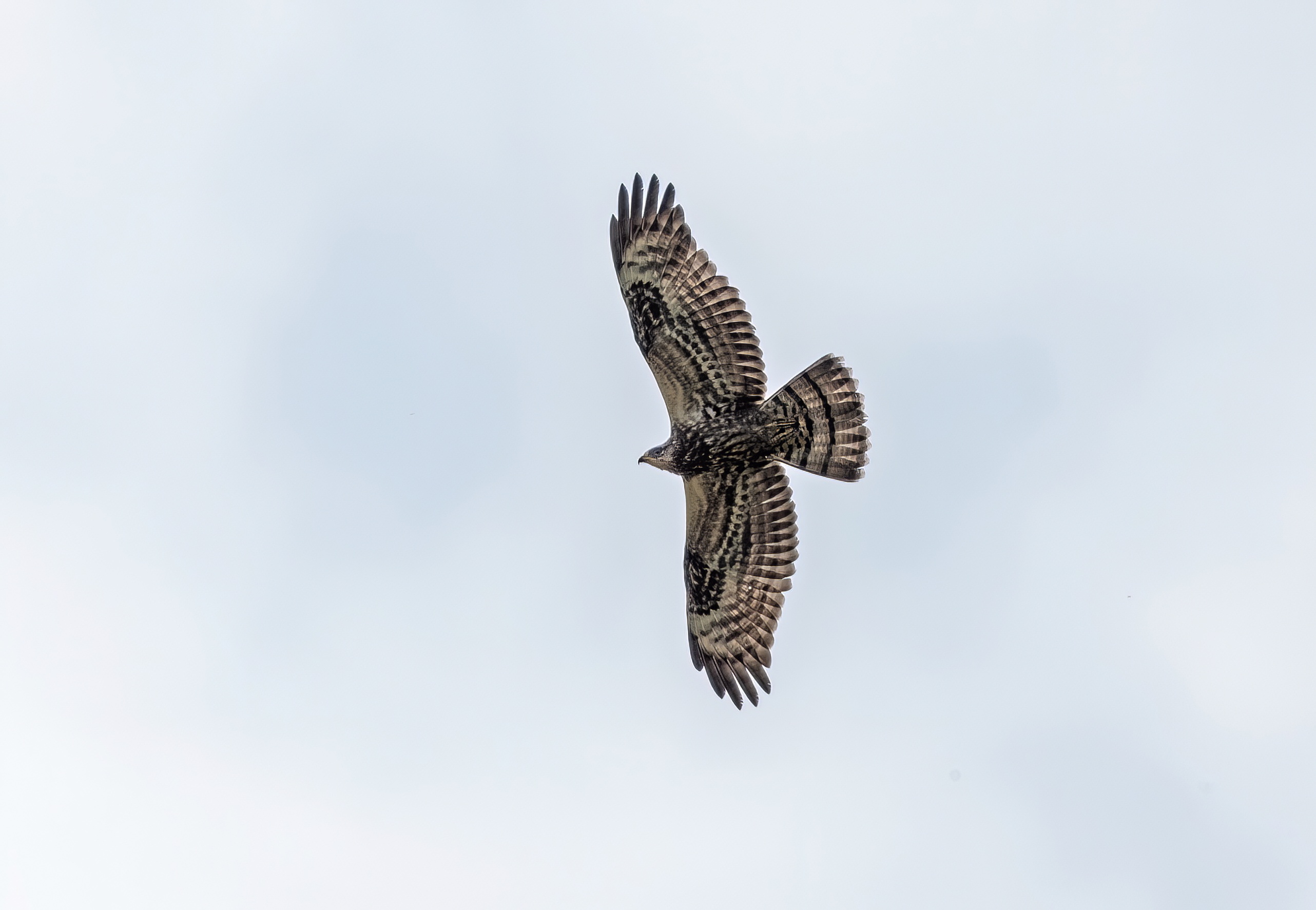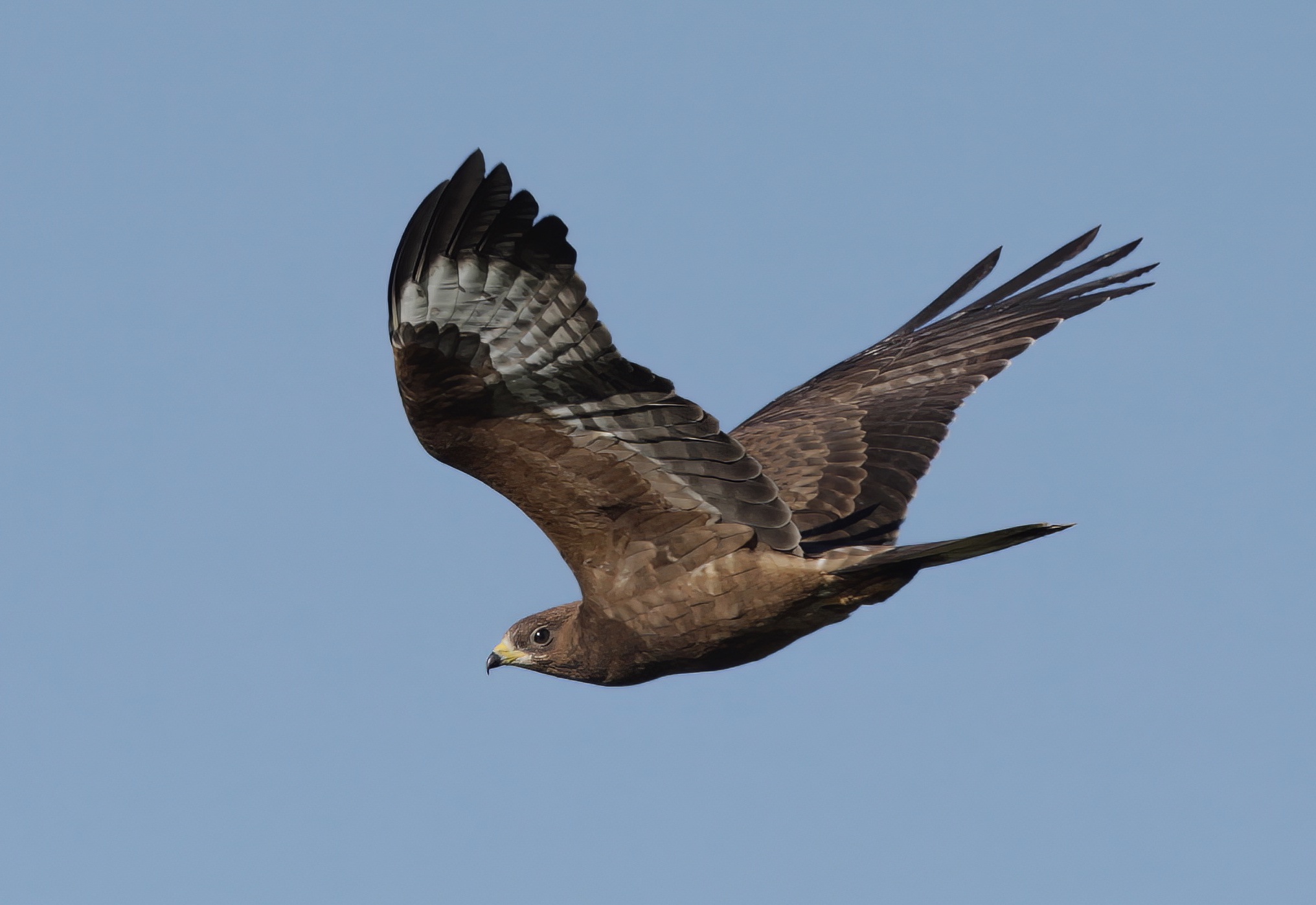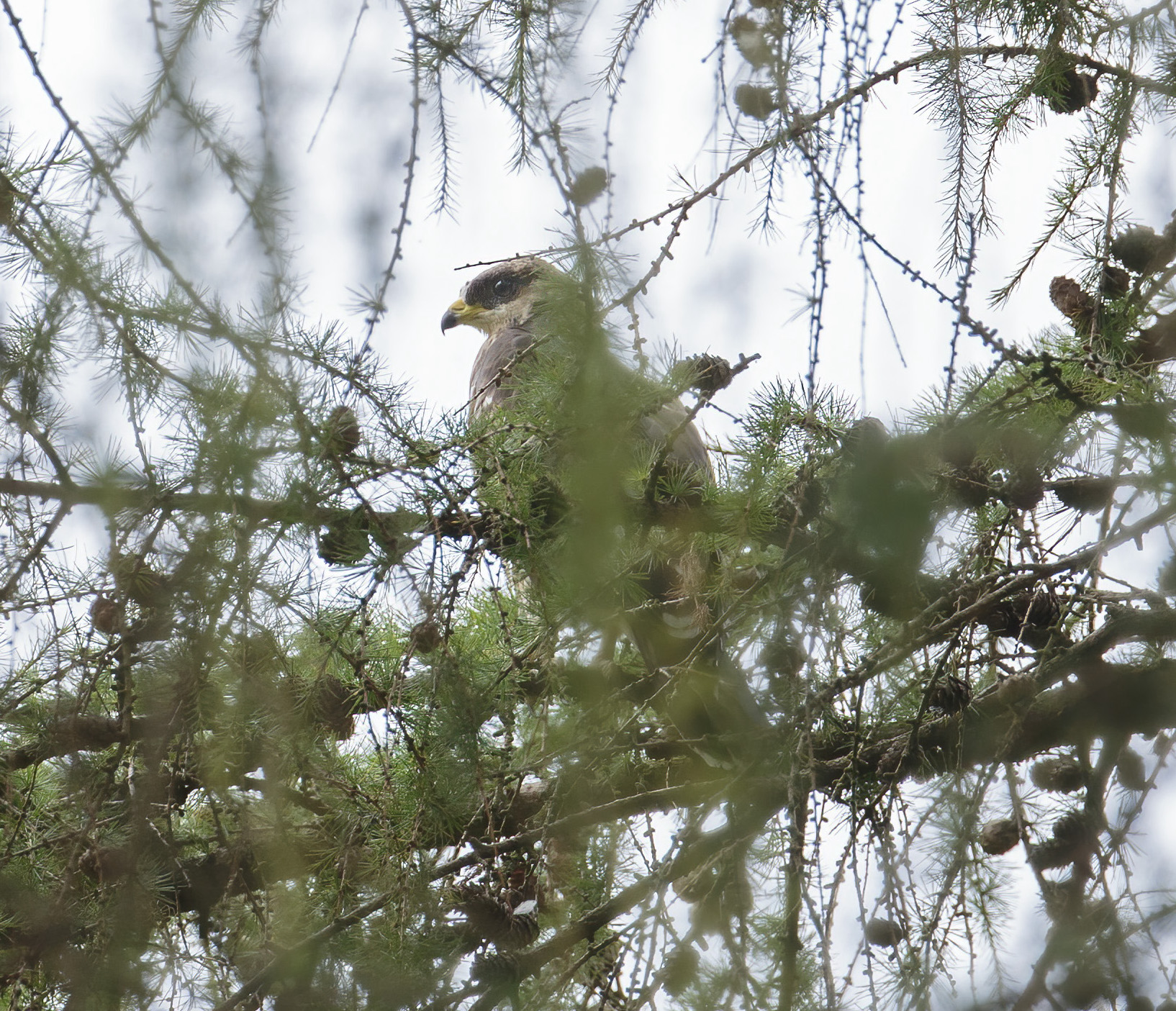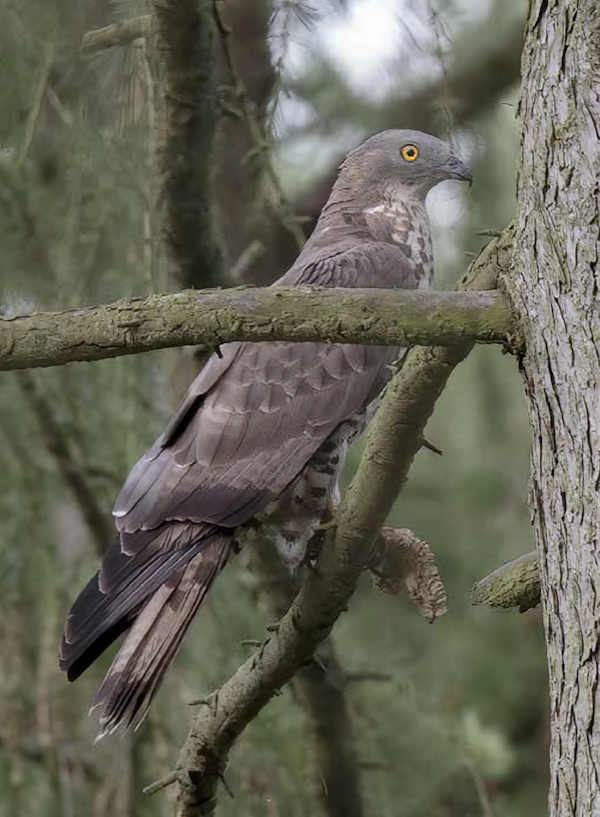European Honey Buzzard Pernis apivorus




First breeding record in Lincolnshire, 2014.
"On subsequent visits in late June and July sightings were limited and infrequent coinciding with the expected period of incubation. By early August both birds were observed carrying food back to a presumed nest site and breeding was proven in mid-August when a nest was located containing at least one youngster. The nest was typical of that described in the literature, a metre across and sited 10-12m high in the crown of a mature Larch tree 40m from the edge of an adjacent ride. Despite this the nest was only visible from one location and was hidden from view from the ride by adjacent trees. During the latter half of August, it was confirmed that there were two juveniles in the nest, both pale/intermediate birds, which started branching on the 22nd and were seen in flight for the first time on the 27th. On August 30th a new male appeared over the nesting wood and drifted off south-east. Both the male and female were seen on the 30th with the male undertaking some display flights but they were not seen to go to the nesting wood, and this was the last date that either adult was seen. Both juveniles were flying strongly but still in the vicinity of the nest site on September 3rd but there was no sign of either bird on the 7th. This formed the first proven instance of breeding by this species in Lincolnshire as far as is known and the fledging of two juveniles was seen as a very positive sign suggesting that sufficient food and habitat was available for the birds to return in subsequent years.
In 2015 it was June 9th before a Honey-buzzard was seen at the previous year’s locality and this proved to be the female that had bred in 2014. From mid-June to August 16th the female was seen frequently performing high soaring displays and bouts of butterfly displays peaking on August 7th when she did three bouts of 7-10 wing-clapping displays followed by a marathon 16 consecutive bouts of wing-clapping. These display flights were with lowered feet suggesting a second bird was in the area but none could be located. The male of 2014 failed to return in 2015 and with no replacement male there was disappointingly no breeding attempt, and the female was last seen on August 16th. Searches in the early season of 2016 failed to detect the presence of any Honey-buzzards in the area but surprisingly on July 23rd the same female was seen flying low over an open field before landing in a low thorn hedgerow where she appeared to pick up a food item. Following an interaction with a Common Buzzard the female then soared up high and set off in a powerful flight to the east. There were no further sightings in 2016 and subsequent surveys in 2017–2020 failed to produce any sightings of Honey-buzzard in the area".
The 2019 RBBP report show a 5-year mean of around 38 breeding pairs of Honey Buzzards in the UK though point out that the true total may be double this given their very secretive nature.
Reference
Catley, G. P. (2020). Honey-buzzards breeding in Lincolnshire 2014. Lincolnshire Bird Report 2020: 199-201.
(Account as per new Birds of Lincolnshire (2021), included September 2022)

